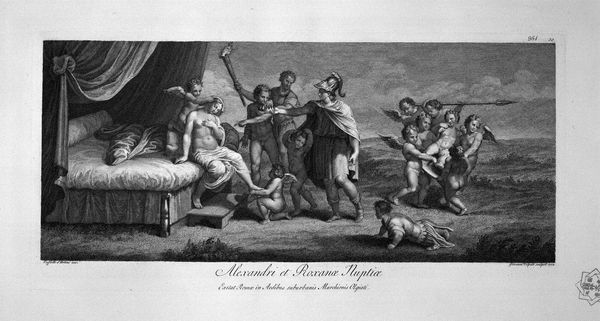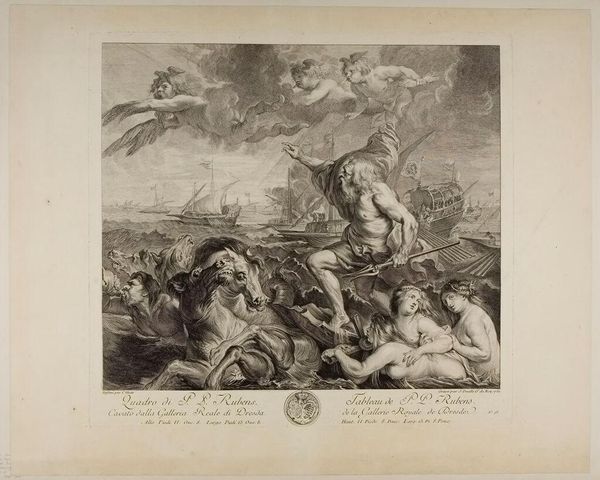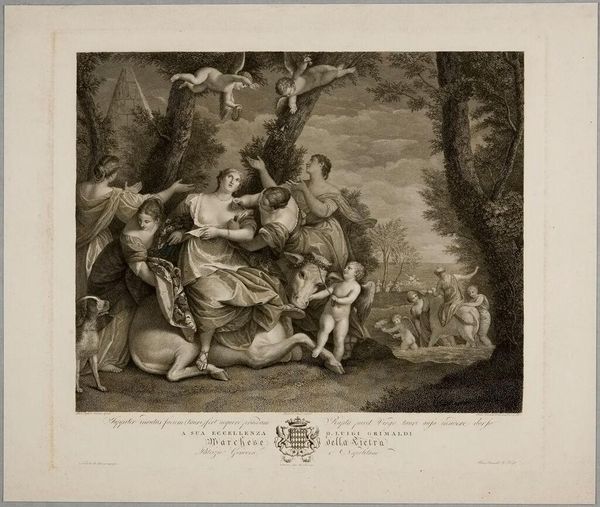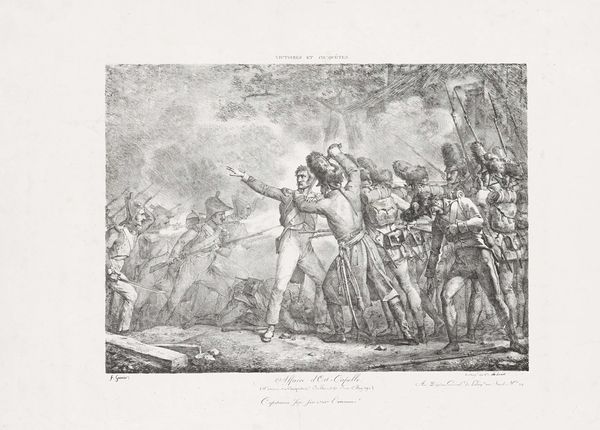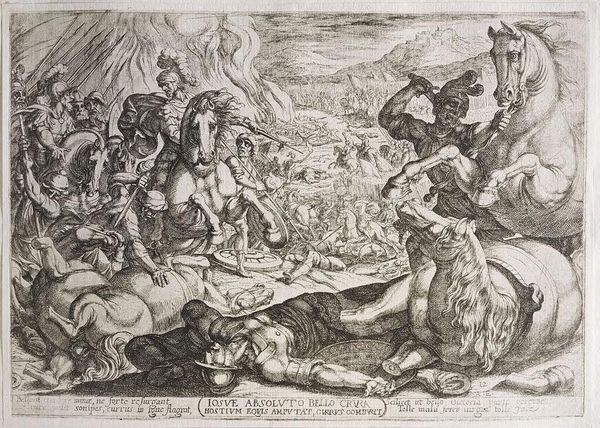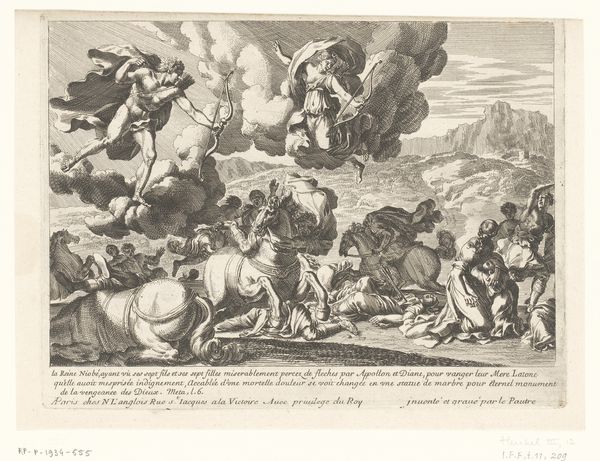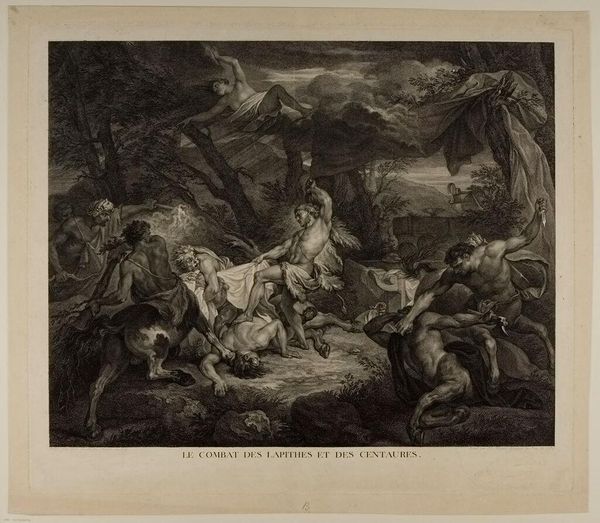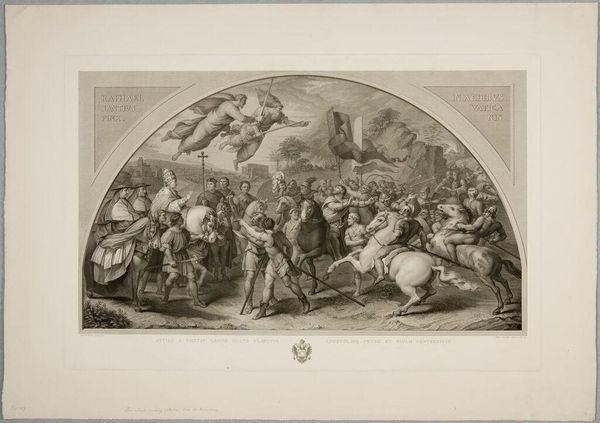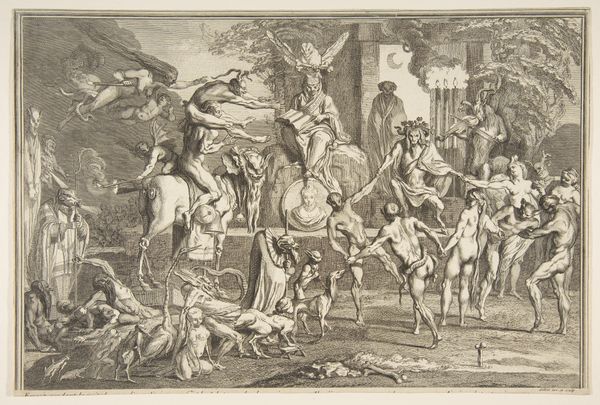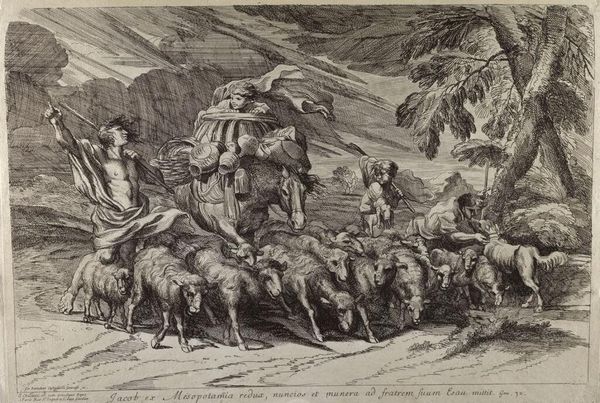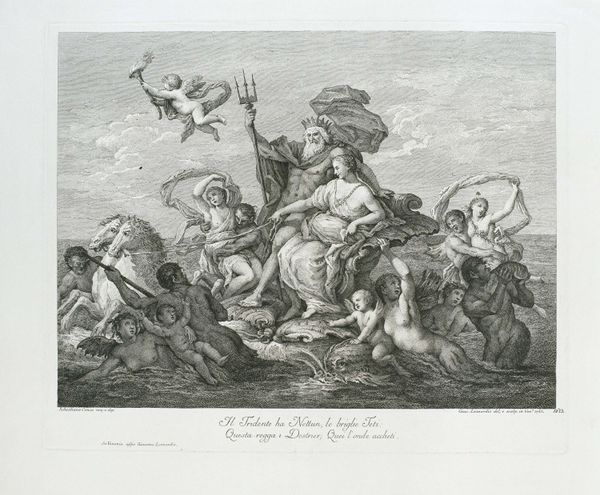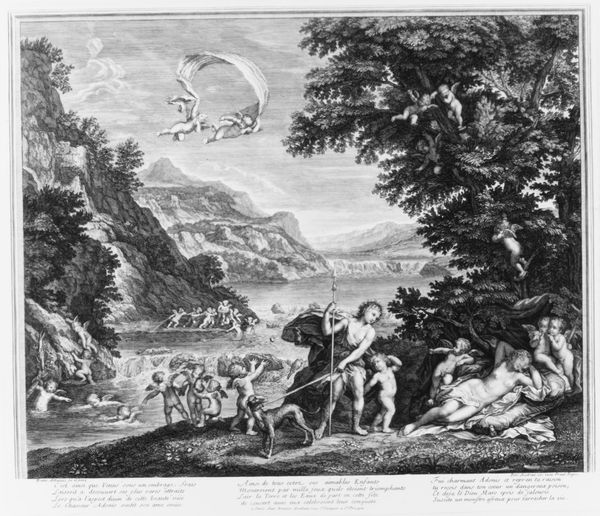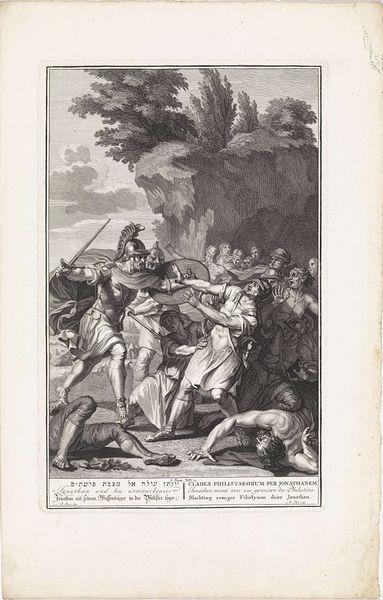
print, engraving
#
baroque
# print
#
landscape
#
figuration
#
roman-mythology
#
mythology
#
line
#
history-painting
#
charcoal
#
engraving
Copyright: Public domain
Editor: Right, so this print is titled "Meleager and Atalanta," by Giovanni Battista Piranesi. It's an engraving, featuring a scene with many figures fighting a large boar in a forest. There's an incredible amount of action, almost chaotic, yet the artist manages to maintain clarity. I’m struck by how theatrical it feels. What's your read on this artwork? Curator: Indeed, it’s a powerful image. Piranesi, known for his dramatic architectural fantasies, here uses engraving to construct a vision of myth as historical spectacle. Look closely at the staging - the forest serves not merely as background, but as an environment fraught with cultural weight. He creates a visual arena, presenting myth not as simple tale, but as historical event witnessed and shaped by socio-political forces. Where do you see evidence of that interplay between art and power here? Editor: I suppose the placement of the figures makes the center very prominent. But what power are you talking about here? The hunt, or...? Curator: Consider the original viewers. Think about who was consuming prints like these, displaying them. Wealthy elites often collected these prints. This work normalizes violence as a necessary endeavor, even portraying a Roman myth for the elite class. Doesn’t that speak to how imagery served to reinforce a particular worldview and justify actions on the world stage? How is history being mobilized in the service of social order? Editor: So it's not just a mythological scene; it's reflecting power structures of Piranesi’s time and those of ancient Rome? It's making me think about how museums frame history. I originally thought this was purely aesthetic, now I see how deeply embedded the politics of imagery are. Thank you! Curator: And how crucial it is for us to always question the context in which such art emerges and continues to circulate.
Comments
No comments
Be the first to comment and join the conversation on the ultimate creative platform.
